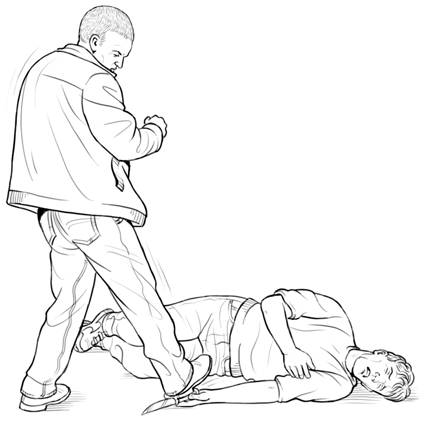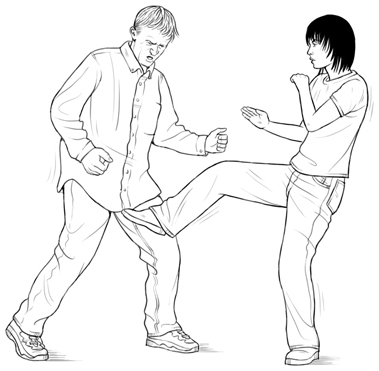
Any confrontation or violent situation is unpleasant and frightening, and there are no simple answers. Effective self-defence is a matter of playing the odds – increasing your own advantages and decreasing those of an opponent.

‘All you need to do is…’
Nothing ever works 100 per cent of the time. Running away, for example, may be practicable in some situations, but it is only worth fleeing if you have a reasonable chance of escape. If the assailant is likely to catch you then running is not a viable option.
The Universal Rule
The only universal rule is that it is necessary to evaluate the situation – potential assailants, possible assistance, environmental factors and anything else that might affect the outcome – and formulate a response accordingly, i.e. you must fight smart and always keep in mind that the ultimate goal is your safety, which is not necessarily the same thing as winning a fight.

Simple answers like ‘just kick him in the groin’ are useless. You need a range of effective measures to cover all possibilities.
Dealing with Threats: Street Violence
Street fights tend to start suddenly (although an informed observer can usually see what is about to happen) and are usually short in duration. They are generally won by whoever lands the first clean blow to the head, and this is often the first punch. Usually this does not result in an instant knockout, and the rest of the ‘fight’ tends to be more of a beating delivered to someone who cannot properly defend himself.
The most common sort of attack, even with an assailant who has some training, is a barrage of extremely aggressive but not always very well executed punches. Some fights go to the ground, but most are already more or less won by this point. Your first priority must be to learn to fight standing up, since virtually all fights start this way.
Not all fights or physical assaults start with outright violence. There may be a confrontation, an exchange of threats and insults or other signs that things are going awry before punches are thrown. It may be possible to de-escalate a situation or withdraw from it at this stage, but once violence has begun it is usually necessary to use physical measures to end it.